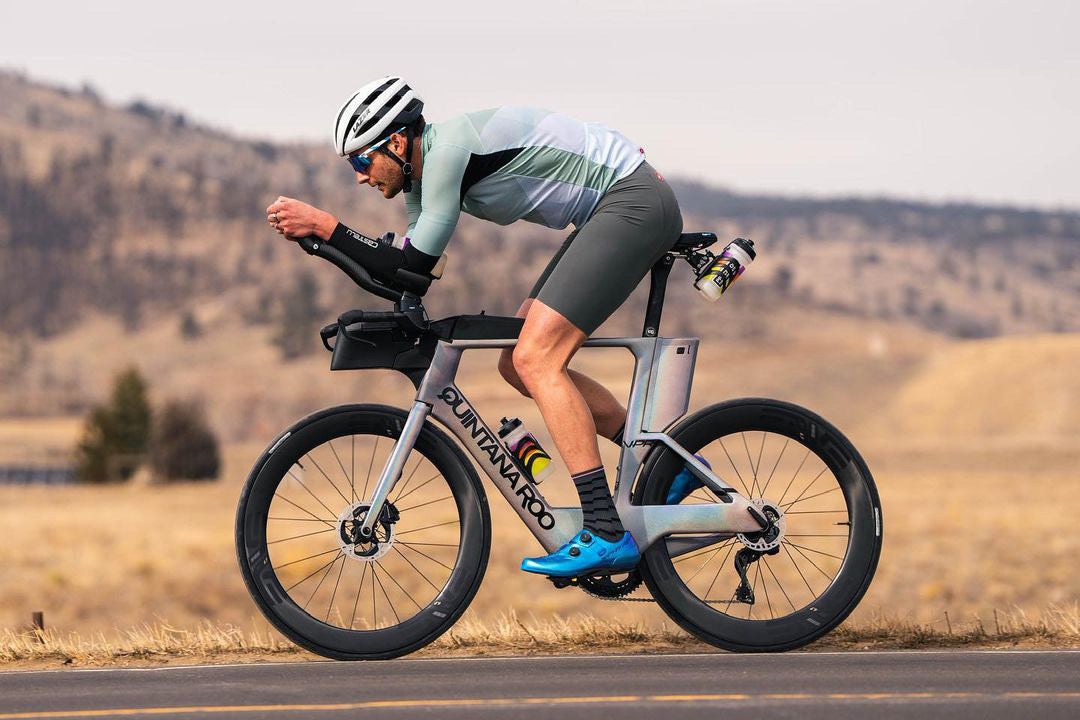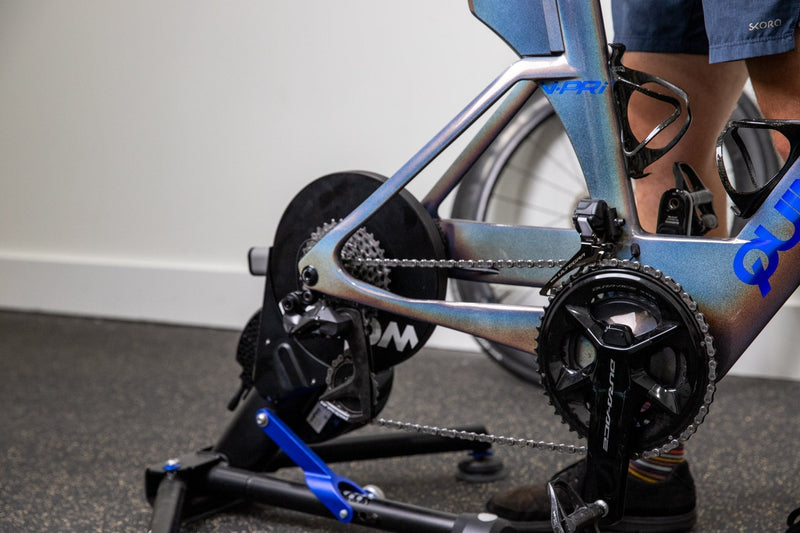HYDRATION STRATEGIES FOR TRIATHLETES

This article was written by Katie Elliott, MS, RD, Sports Dietitian and USAT Coach with Elliott Performance & Nutrition.
The topic of hydration can feel tricky for many triathletes. While most of us know that it is important to drink, there is confusion around how much to drink, what to drink, when to drink and so on. As triathletes, nailing this piece of the nutrition puzzle can play a critical role in maximizing performance. The linchpin is you have to create a plan that makes sense for you as an individual.
Benefits of Performance Hydration
From a 10,000-foot perspective we all know that we should drink when we train and race. Now let’s talk briefly about the why. One of the main reasons to hydrate properly is performance takes a hit when an athlete is dehydrated. As much as a 1-2% loss of body water through sweating has been shown in research studies to negatively impact athletic capacity[i]. From a physiological standpoint, the body must work harder as a consequence of dehydration because core temperature and heart rate are increased, while blood pressure decreases. These physiological factors are part of the reason an athlete feels fatigued and can experience negative consequences like headaches, nausea and vomiting as a result of dehydration. In contrast, proper hydration helps maintain performance, assists in recovery and can ward off injury.
Electrolytes and Performance Hydration
If we are talking about hydration and athletic performance, it’s imperative that we touch on electrolytes. When we sweat, we lose the following electrolytes: sodium, chloride, potassium, magnesium and calcium. The concentration of sodium and chloride in sweat is a lot higher than the other electrolytes. When athletes don’t adequately replace sodium chloride, it can lead to cramping. Other theories for cramping include the neuromuscular theory, which I believe is part of the equation along with sodium losses. Another consequence of not replacing sodium is developing hyponatremia.
What is Hyponatremia?
Hyponatremia is a medical term that refers to low sodium levels in the blood. In athletes, this generally is the result of overdrinking water and thus not adequately replacing sodium. Initially, hyponatremia can result in the following, performance eroding symptoms:
- Nausea
- Lethargy
- Muscle cramps
- Weakness and fatigue
- Headaches
- Restlessness
In more serious cases, symptoms can include seizures and coma. In the most extreme cases, hyponatremia will cause brain cells to swell as the blood looks to get rid of excess fluid so that it can achieve equilibrium. In this situation hyponatremia can be fatal. A lot of us have heard about the danger of hyponatremia, but, perhaps we don’t realize how common it can be in triathlon. In one study published in The New England Journal of Medicine, researchers found a 10% prevalence of hyponatremia in athletes at the Ironman European Championships.[ii]
General Hydration Tips
So how do you hydrate properly to achieve your goals and prevent negative consequences?
Start your Training Sessions Hydrated
It is important to begin workouts in a hydrated state. That means that you need to be drinking throughout the day in addition to having some fluid at least 4 hours before exercise and, additionally, 2 hours in advance of your training session. Some general recommendations from the American College of Sports Medicine are as follows:
- ACSM Recommendation: Drink 5-7ml per kg body weight 4 hours before exercise and drink 3-5ml per kg body weight 2 hours before exercise (i).
- Translation: If you weigh 130lbs, drink about 10-14 ounces of fluid 4 hours before training and drink 6-10 ounces 2 hours before your workout.
Stay Hydrated During Training as Well
You also need to be replacing fluids lost [through sweat] during training. This is where things get slightly more complicated because different athletes have different hydration needs (more on that later). Here are a few general recommendations to get you started with a hydration plan (we’ll talk a bit later on steps you can use to individualize your strategy).
- Begin by drinking 16-24 ounces of fluid per hour (or roughly one water bottle)
- Plan to drink every 10-15 minutes if possible
- To see if you are drinking enough, weigh before and after workouts. If you have lost more than 2% of your body weight, then your fluid replacement was not adequate to prevent performance decline. Next time work to drink more fluid during exercise (i.e. if you are a 130 lb person and you lost 2.6 pounds or more during exercise, you need to be consuming more fluids while you are training).
- Utilize sports drinks in appropriate situations to maximize during-exercise hydration.
When to Drink a Sports Drink
A sports drink can be beneficial in some situations, but is unnecessary in others. The benefits of drinking sports drinks in appropriate situations are as follows:
- Fluids are better absorbed with electrolytes found in sports drinks
- Glucose is better absorbed in the presence of sodium, which is important if you need to take in carbohydrates during exercise.
- Sodium (present in sports drinks) stimulates thirst and helps to keep athletes drinking/ hydrated
- Sodium (present in sports drinks), helps to maintain blood plasma volume. Since sweat is pulled from blood plasma, declining levels means the body has to work harder to cool itself and to maintain capacity. Thus having sodium in a drink, when salt losses are significant, can be important for both performance and health.
On the contrary, the drawbacks of consuming sports drinks when you don’t need them are added calories, carbohydrates and sodium in excess of the body’s needs. Here are some general rules of thumb about how to choose your drink:
DRINK SPORTS DRINK:
- If you are working out at moderate intensity for 90 minutes or more.
- If you are working out at vigorous intensity for over an hour.
- In competition situations (to maximize fluid absorption and to keep glycogen stores topped off).
- If you have two training sessions a day that consist of moderate to vigorous intensities.
- If it is the day before your race, and your event will be held in hot conditions.
DRINK WATER OR LOW-CALORIE ELECTROLYTE REPLACEMENT (i.e. Nuun or Precision Hydration effervescent tabs):
- For vigorous intensity workouts under an hour
- For moderate intensity workouts under 90 minutes
- In between workouts
Bottom line, sports drinks serve a purpose in certain situations, but should only be used when they are necessary.
Fluid and Electrolyte Replacement Post-Exercise
Replenishing fluids after training or racing will ensure you are hydrated and ready to go for your next workout or event. The best way to gauge what you need is to weigh yourself before and after exercise. For every pound you lose, you should drink 16-24 ounces of fluid preferably with a meal (the fluid will be absorbed better if paired with electrolytes in food).
Another practical way to gauge hydration status is to monitor the color of your urine alongside thirst and how you are feeling. If your urine color is clear and you are having to pee a lot, you can probably slow down on drinking. If your urine is consistently dark and you are often extremely thirsty after training, you might need to consider having more fluids during your workouts. Basically, urine color should be a part of what you consider to determine hydration status, but not your only measure. This is because urine color doesn’t always correlate to actual hydration status at a blood and cellular level (where it is most important). Urine color can be influenced by numerous factors such as alcohol intake, taking certain medications, drinking a lot of coffee and tea, swimming in cold water, drinking a lot of water all at once and nerves. Therefore, taking into account a few different measures is the best approach.
Individualizing your Hydration Strategy
Hydration needs vary significantly within and among athletes. Different athletes lose different amounts of sweat per hour [sweat rate]. Different people also lose varying levels of sodium per liter sweat per hour [sweat concentration]. Here is a little perspective. I have seen some athletes who only lose 16oz per hour and others who lose upwards of 41oz per hour. In addition, different factors like environmental conditions, exercise intensity, heat acclimation can affect sweat rate. To see what amount you personally need to be drinking per hour, it makes sense to conduct a sweat rate test in various conditions. You will want to keep track of this data, so that you can use the it to inform training and racing strategies.
In terms of sweat concentration, some athletes lose 200mg sodium per liter of sweat while others lose 2000mg sodium/liter.[iii] Thus sweat concentration testing, using an accurate method like Pilocarpine Iontophoresis, can be huge in informing your strategy. Click here to learn more about the benefits of sweat concentration testing.
In Conclusion
These days, it takes a lot to get on a podium. You need to take every advantage you can to ensure you are shaving the tiny fractions of time that put you in contention. Ensuring you stay hydrated before, during and after exercise is a basic step you can take to maximize performance and health. Individualizing your strategy is a more advanced step that is worth taking if you are serious about your goals. Whichever direction you decide to go, know that you are moving the athletic performance needle by paying attention to what, when and how often you are drinking.
Other Information
Katie Elliott, MS, RD, Sports Dietitian and USA Triathlon Coach
Website link: www.elliottperformanceandnutrition.com
Instagram Handle: @elliottnutrition
[i] Karpinski, C. and Rosenbloom, C. (2017). Sports Nutrition: A Handbook for Professionals, 6th Edition. Chicago: Academy of Nutrition and Dietetics.
[ii] Danz, M., Pöttgen, K., Tönjes, P. M., Hinkelbein, J., & Braunecker, S. (2016). Hyponatremia among triathletes in the Ironman European Championship. New England Journal of Medicine, 374(10), 997-998.
[iii] Precision Hydration. (2018). Are you Hydrating your Athletes Properly? Retrieved from: https://www.precisionhydration.com/pages/sweat_testing_professional_athletes.



